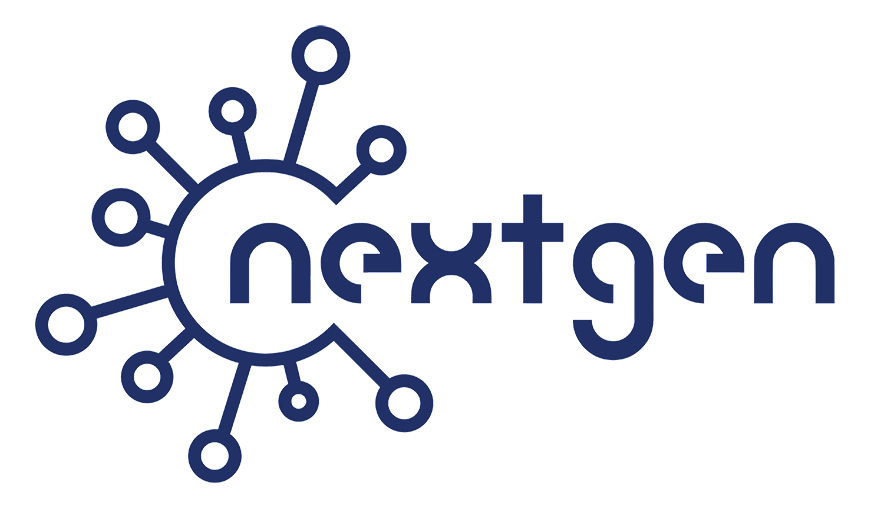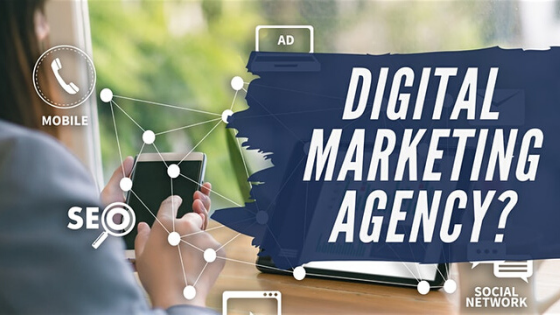
by NextGen | Mar 12, 2020 | Digital Marketing
In this blog post I will discuss the top 3 marketing channels that digital marketing agencies serve. Hopefully, through this blog post you will gain a better understanding of what digital marketing agencies do.
Why I Decided to Write About This Topic
I run a digital marketing agency and my friends and family keep asking me to clarify what I do. The clarification questions were quite surprising to me at first, but then I realized that many people actually do not know what digital marketing agencies do.
I think it is very important that all the readers of my blog have a very good understanding of what digital marketing agencies do, therefore I decided to write on this topic today.
Important Digital Marketing Terms
There are a couple of important terms that I would like to clarify before I dive into today’s topic.
- What is Digital Marketing?: Digital marketing is any marketing activity that can be done online or by using an electronic device. So, for example, when you use your computer (an electronic device) to send an email you are performing a digital marketing activity.
- What is a Marketing Channel? In simple terms, a marketing channel is a category of marketing activities. In this blog post I will discuss the top 3 marketing channels that digital marketing agencies serve, so that means that in this blog post I will actually discuss the top 3 categories of marketing activities that digital marketing agencies do.
Channel #1: Social Media
Social Media is definitely the biggest channel for my team. We spend the most of our time on social media activities because it takes a lot of time and effort to manage client’s social media profiles.
When we get a new client for social media services the first thing that we do is we create a content plan. In the content plan we talk about the following:
- Social Media Networks: What social media networks we will cover.
- Themes: The themes that we will develop content on.
- Format: The format of each post (video, picture, carousel, etc.)
- Frequency of posting: How frequently we will post (once per day, two times per day, three times per week, etc.)
Then, after we have finished the content plan the next step is to develop the content. This means to develop the graphics and the captions for every post. Also, we perform hashtag research to find the best hashtags for every post!
The next step after developing the content is very important, the next step is to send the content to the client for approval. It is very important that the client has an opportunity to review the content and provide feedback before you post anything on his/her social media profiles! At my marketing agency we have developed a Google Sheet template that we use to collect the content in and send it to the client. Click here to see the template.
Then, after the client has approved the content the next step is to schedule the posts. We use social media management tools such as Buffer, Hootsuite or Loomly to schedule the posts. Then the posts get published automatically on the scheduled date and time.
In addition to those standard social media service, for clients who have bigger budgets we can also provide additional services such as responding to comments (on posts) or direct messages. Also, we frequently run paid ads for clients. Paid ads are a totally different world, therefore I will write a separate blog posts about paid ads in the future.
Channel #2: Email
The second digital marketing channel that I would like to talk about is email. I love email! In my opinion email is the most effective digital marketing channel. Many people still open their emails, and the average email open rate for email is over 15% percent. While, when you target people via other digital marketing channels normally only a few percent of your targeted audience will see the content that you are trying to present to them.
When we get a new client for email marketing services first we discuss their current email marketing list. We want to understand how the client has obtained their existing list of email contacts. Then, we talk with the client about different strategies that we can use to add new contacts to their email list. For email marketing it is very important to have a long and growing list of contacts.
Then we discuss with the client their desired mailing frequency. Most clients want to do monthly newsletters. So, the mailing frequency is normally once per month. Then we proceed to creating and scheduling the emails. We use the email marketing tool Mailchimp to create, schedule and distribute the email.
In addition to those standard email marketing services we can also provide more advanced email marketing services, such as email automation, to clients with bigger budgets. Email automation mean sending emails to people based on their behavior. A simple example of email automation is when you send a “welcome email” to everyone who signs up for your monthly newsletter. A more complicated example of email automation is when you create multi-step email cadences based on people’s behavior. Email automaton is an advanced topic, therefore I will write a separate blog post on this topic in the future.
Channel #3: Website
Yes, your website is a very important marketing channel! We help clients with the marketing aspects of websites such as color, text and graphics. It is very important to remember that we are not programmers, therefore we cannot do complicated, customized website elements. For more complicated website related tasks we work with the client’s IT team, or the vendor that is maintaining their website.
More specifically we help clients with the following aspects of their websites
- Making sure that the content on the website is structured in the right way so that the website can be easily found by search engines. This is called Search Engine Optimization (SEO).
- Making sure that the website looks attractive to potential clients and that all the colors and text work well together.
- Making sure that everything on the website is on-brand so that the website represents the client’s brand in the best possible way.
Thank you!
I hope you enjoyed this blog post. English is my second language so I apologize if there are any grammar mistakes in this blog post. If you enjoyed this content please click here to subscribe to my monthly newsletter.
Thank you for visiting my blog!
Aneta
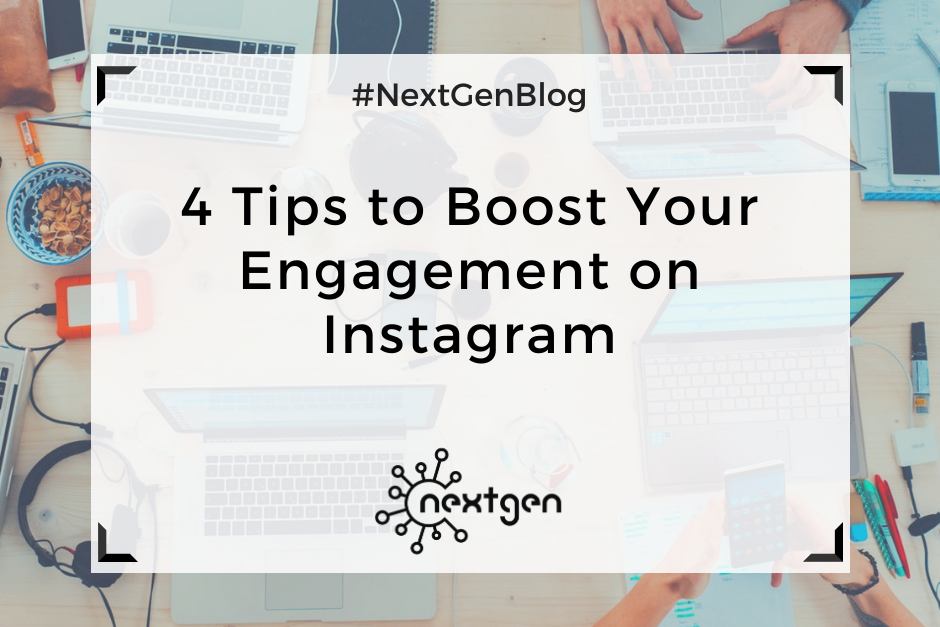
by Sofi | Oct 21, 2019 | Social Media Marketing
High Instagram engagement can help you increase your brand exposure and create better relationships with your customers, which can ultimately lead to increased sales. Even if your strategy is posting high-quality content on a regular basis, we assure you that’s not good enough. There are many other things you can do to engage your followers. So, here are four recommendations on how to create more engaging Instagram posts:
#1 Add long tail hashtags
When you post your content to Instagram, add long tail hashtags. Make sure they are relevant to your brand and industry, and don’t make them too general or too specific. Posts with too general hashtags will easily get drowned in other posts, while posts with too specific hashtags will be harder to find. Try to think like your audience and imagine what type of hashtags they are most likely to search for. Using the right long tail hashtags on your Instagram posts will help you attract and engage many followers.
#2 Use emojis
Emojis may not seem so relevant, but they can actually make a big difference when it comes to Instagram engagement. A study by the Social Media Lab found that posts with emojis had a 15% higher interaction rate, which means that using emojis on your Instagram posts can result in higher engagement. However, if you think that emojis are not really right for your brand or industry, then it’s better if you don’t use them often or at all.
#3 Add location
This one might seem like a no-brainer, but many users forget to add location to their posts. Adding location can increase your visibility to people that live in a specific place and to people searching for content related to that place. This is true for both posts and stories. So next time you post something on Instagram, don’t forget to add a location.
#4 Add a call to action
Adding CTAs to your posts is another way to boost engagement on Instagram. This means that to be more engaging your posts should include some kind of CTA statement that encourages your followers to take action, such as: click the link in bio, answer this question, tag your friends, etc. You can also include CTAs in your stories by using question or poll stickers for example. Make sure you include CTAs in your posts more often, but be careful not to overdo it because you will risk becoming annoying to your audience.
***
If you want to learn more, read the following articles on this topic:
- https://www.falcon.io/insights-hub/topics/social-media-strategy/21-tips-increase-instagram-engagement/
- https://www.quicksprout.com/instagram-engagement/
- https://www.socialinsider.io/blog/boost-instagram-engagement/
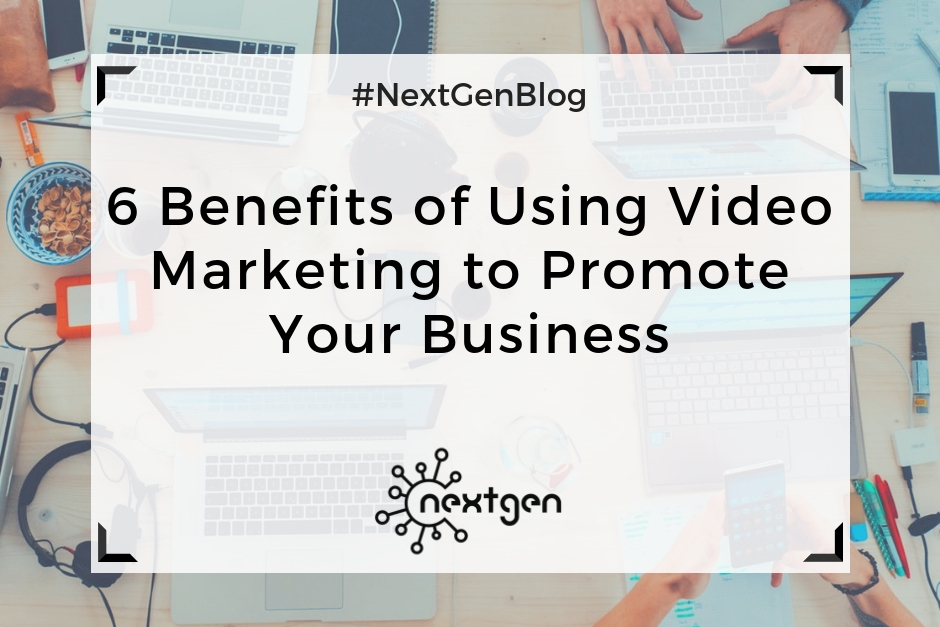
by Sofi | May 30, 2019 | Other
Video is a powerful content marketing tool, and many businesses have made it an integral part of their marketing strategy. According to Renderforest, 5 billion videos are watched on YouTube every day, 100 million hours of video per day are watched on Facebook, and 4.6 billion video ads are watched online each year. These statistics prove that video marketing can be a rather effective way to promote and grow your business.
So, here are six important benefits of using video marketing:
#1 Increases brand awareness
Video attracts people’s attention more than other types of content. Creative and engaging video content is more likely to get likes, comments, and shares and has a great potential to become viral. This will increase people’s awareness of your brand and can get you new followers and new potential customers.
#2 Builds trust and emotional connection
The number one goal of marketing is to create long-term relationships with your customers, which are based on trust. Video is a great way to create a personality for your brand and connect with your customers in a more meaningful way, unlike other types of content. In videos, you can use things like voice, music, facial expressions, etc. to tell a story which evokes emotions. You can also create product videos to educate and inform customers about your products, which can help you build more trustworthy connections.
#3 Improves search engine rankings
Search engines love video content because this type of content engages people a lot. If you embed videos on your website, visitors will spend more time on your site, which in turn will help you rank higher in Google search. Also, don’t forget to optimize your video content for SEO by adding relevant titles, descriptions, links, and other important information.
#4 Boosts conversions and sales
According to a study by Eyeview, including video on a landing page can boost conversions by 80%. So, consider including a product video on your landing page to achieve this. Videos can also help you drive sales. Including an informational product video on your landing page might positively influence people’s decision to buy your product as well.
#5 It’s great for explaining products and services
By combining the visual and audio elements of a video you can easily explain or demonstrate your product or service. According to Wyzowl, 98% of users say they’ve watched an explainer video to learn more about a product or service. Also, according to Animoto, four times as many consumers would rather watch a video about a product than read about it. So, try to create informative product videos that will be useful for your viewers.
#6 Improves social engagement
Creating great video content will help you drive engagement on social media. If your followers like your content they are very likely to share it, and social sharing will increase your audience reach. The number of social media users is constantly growing, so keep that in mind when planning your future video marketing strategy.

by Sofi | Mar 15, 2019 | Other
Ranking refers to your website’s position in the search engine results pages (SERPs), and ranking factors are essential for effective search engine optimization (SEO).
According to SEO experts, there are over 200 ranking factors used by the Google search algorithm to rank websites and pages. However, not all ranking factors are equally important.
Here is a list of the most important Google ranking factors you should consider for 2019.
#1 Content quality
Publishing high-quality website content is crucial for good rankings.
- Create pages containing content that provides valuable information for the users, but also make sure your content has some length to it. According to research, content with over 2000 words gets higher rankings.
- Do a keyword research and use relevant keywords in your content. Also, use LSI keywords, which are keywordssemantically related to your main keyword.
- Understand search intent to understand what people are looking for and optimize your content accordingly.
- Optimize your pages for voice search since more and more people search content by voice.
- Video is very popular and drives a lot of traffic, so make sure you include video in your content strategy.
#2 Secure website
Switch your website to HTTPS, if you haven’t done so yet. HTTPS was first announced as an official ranking factor on the Official Google Webmaster Central Blog in 2014. Although it doesn’t affect SEO significantly, according to Google’s Gary Illyes, HTTPS may serve as a tiebreaker when the quality signals for two search results are otherwise equal. Plus, transitioning to HTTPS will help you deliver a better experience for your users.
#3 Mobile-friendly website
More than 50% of searches are now done on mobile devices, so you need to have a mobile-friendly website to provide a good user experience to your customers. Google now uses mobile-first indexing, which means that they use the mobile version of a page for indexing and ranking. Optimize your website for mobile and make sure your desktop and mobile content match.
#4 Page speed
Google wants to provide the best web experience for users, so the websites that load faster will rank at top results. That’s why page speed is a major ranking factor for your website, and you should optimize your page speed on both desktop and mobile.
#5 Backlinks
Backlinks are one of the most important ranking signals on Google. To rank higher in the search results, your content should get quality backlinks from authoritative and relevant websites. You can build backlinks by writing great blogs and articles, creating infographics, guest blogging, writing skyscraper content, etc.
#6 Domain age and name
Websites that have existed for a longer period of time hold top ranking positions, while new websites have a hard time achieving that. So, it’s a great advantage if your website has been active for more than a year. Another relevant ranking factor is the domain name. If you have a quality website, an exact-match domain can help you rank higher.
#7 User experience
User experience (UX) influences your SEO as well. Focus on providing a great user experience by creating a website that is easy to use and navigate and has relevant, valuable content. This will keep visitors on your page longer, and it will help improve your search engine ranking.
#8 On-page SEO
On-page optimization is another important factor for improving your ranking position. Here are some aspects you need to look at when optimizing your website:
- Optimize your website with efficient metadata by writing relevant meta titles and meta descriptions for your pages.
- Use header tags to show the hierarchy of your content.
- Use keywords in the alt tags of your images to describe them.
- Use schema markup to provide search engines with more information about your content.
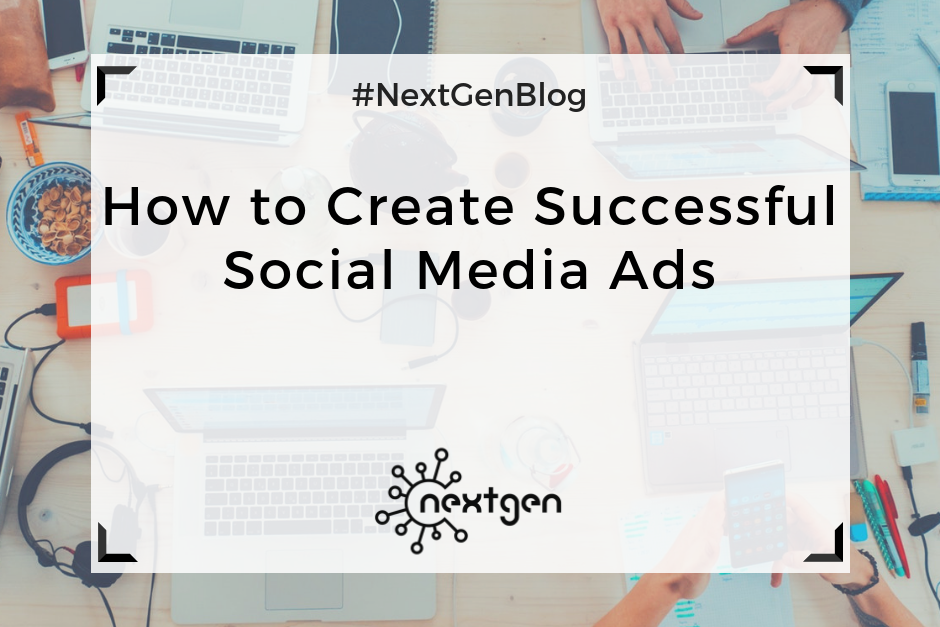
by Sofi | Dec 21, 2018 | Social Media Marketing
Social media advertising is one of the biggest social media trends, and it can benefit the growth of your business. The reach of organic content is slowly declining. Paid social makes sure that your content is getting in front of the right people. This form of advertising targets a specific audience that you outline with customizable demographic information. However, you need a strategy for paid social media advertising in order for it to work and be worth your time and money. This includes taking ad spend, content selection, and audience targeting into consideration. Here are some tips on how to create successful social media ads.
#1 Choose a Paid Social Goal
Every brand has a different goal. Prioritize your goals, and decide which one to attack first with your social media campaign. There are five common paid social goals: increase traffic, increase visibility, increase engagement, increase lead generation, and increase sales. Each one of these goals will require a different action from your target audience, so your ad needs to direct your audience on what action to take. Using social buttons helps provide the consumer with shortcuts to desired actions. Facebook and Instagram even include options for pre-set goals that affects how, when, and to who your ad is shown.
#2 Choose a Social Platform
Each social media site caters to a specific kind of content with a specific audience. So, you should run ads on sites that your target audience uses. Facebook has multiple ad formats that make it great for business-to-consumer campaigns. Instagram is suitable for increasing web traffic sales and driving awareness. Twitter heavily relies on gaining new followers, which can grow awareness and drive clicks to your website. Because of LinkedIn’s specific demographic, it is a better platform for business-to-business campaigns. Researching where your competitors’ ads are being displayed can be helpful in deciding which platform to use as well.
#3 Blend in With Organic Content
Although you want your ad to grab attention, it is not always helpful for an ad to stand out. When deciding what type of content to display, it is important to make sure that your ad content blends in with the organic content on users’ feeds and walls. Generally, people are aware of when they are viewing ads, and too many ads from your company might lead to people unfollowing you. Posts that stand out as paid social as opposed to organic content will draw more negative attention to how often they are being posted. It is important for your brand to not stand out as spammy.
#4 Choose a Bidding Strategy
One great advantage of social media ads is that they can work on any budget. However, bidding too high might be unnecessarily wasting money while bidding too low could make for an unsuccessful campaign. Researching the best days and times to run your ad can help cut costs while ensuring your ad runs when your audience will mostly likely see it.
#5 Analyze and Adjust
With any marketing strategy for your business, one of the most important steps is analyzing the results of your campaign and adjusting future campaigns based on your findings. You can view insights as to how well your ad is performing and the results in quantifiable actions during and after its duration. So, take the time to adjust your paid social media ad while it is active if the insights are showing that it isn’t reaching your audience. Afterwards, look closely at what was successful about the ad and what can be better changed for next time.
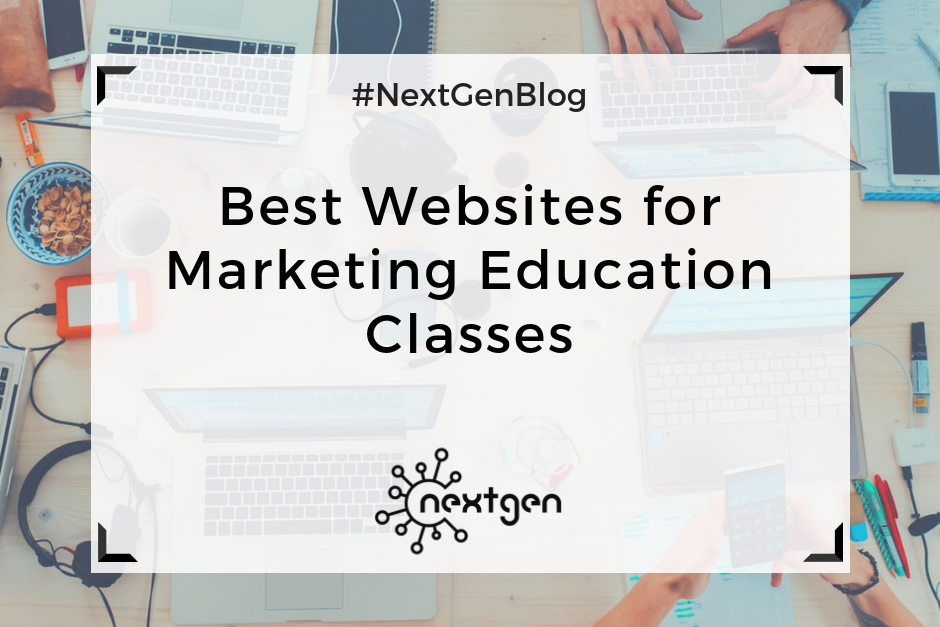
by Sofi | Dec 14, 2018 | Other
In order for any business to prosper and grow, a good marketing strategy is necessary. This requires a good marketer, and in order to be a good marketer it’s crucial to have a marketing education of some kind. Whether you’re a beginner or seasoned professional, there are a lot of options for taking marketing courses or accessing helpful resources online without having to pursue a formal education. Marketing trends are constantly changing, so even someone with a formal marketing education can benefit from taking one of these online courses. Often, you can find these tools online completely free of cost and available to anyone. Here is a list of the best websites for marketing education classes.
#1 Hubspot
Hubspot offers both free and paid courses on a variety of marketing principles that include videos and quizzes to test your knowledge. Along with these courses, there is an extensive marketing library where you can read articles on the topic. One of the unique things about Hubspot is that the training academy allows you to access or rewatch course videos on specific topics without going through the course. The inbound marketing certification course is a great introduction to content marketing and lead generation. It includes 12 classes with over 5 hours of material, and there is a 60 question exam at the end of the course to become certified in the material.
#2 Coursera
Coursera is known for making the best courses on a variety of topics available to anyone anywhere. Partnering with top universities, these courses are built to fit your schedule. You can take courses on business and marketing, as well as on topics like psychology that could benefit your marketing strategies. Although these classes are not free, they are much more affordable than taking the same class at a university. Courses range from $29-$99, with advanced specializations for $250-$500. This offers options for almost any budget.
#3 Udemy
Udemy claims to be the largest online learning marketplace with 14 million students. There are courses on business, development, design, marketing, and productivity that are all beneficial for the success of a business. Typically classes cost around $200, so this option might not be for everyone. However, there are sales and discounts throughout the year to make these classes much more affordable on almost any budget. Businesses can also invest in Udemy courses for their employees to provide valuable training.
#4 My.Copyblogger
My.Copyblogger specifically focuses on the content aspect of digital marketing and offers a lot of useful materials beyond courses. Members can access webinars, eBooks, and forums to expand their education in a format that suits individual learning styles and interests. There is a free 20-part course to improve copy and content marketing that provides a certification at the end of the class. This website is a great tool for introducing people to the best digital practices and writing for the online world.
#5 Google Certifications
Google offers certifications for their online courses in Google Analytics and Google Adwords. Many businesses are requiring employees to be certified in Google Analytics and Adwords because they’re heavily used marketing tools. This makes sure the marketing team has a complete knowledge of how to use these tools via virtual training. Each course combines information pages and video tutorials along with activities and quizzes to help students master the information. The Google Adwords Certification includes specialites in Search Advertising, Display Advertising, Mobile Advertising, Video Advertising, and Shopping Advertising. These certifications are completely free.
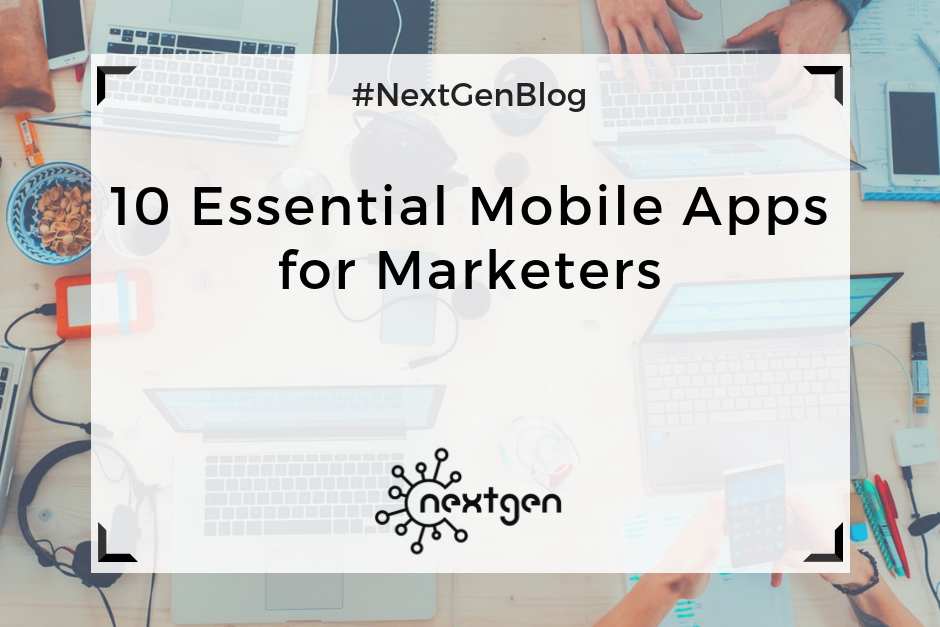
by Sofi | Dec 7, 2018 | Other
If you’re a marketer living in the 21st century, you almost certainly own a smartphone. This is a good thing, because it means that you can actually get some of your job done even when you’re on the move. To do this, you need to have the appropriate apps on your phone. So, let’s look at some of the best apps used by marketers worldwide.
#1 Hootsuite
The Hootsuite app allows you to connect to your Hootsuite account and manage all of your social networks from your phone. You can use the app to monitor the activity on multiple social accounts, create and schedule posts, engage with your followers, track your performance with various analytics reports, and more.
#2 Buffer
Buffer is a social media management platform with similar features to Hootsuite. Its main feature is the automated scheduling of social media posts. Buffer is a little bit more expensive than Hootsuite and usually a better option for large businesses.
#3 Trello
Trello is a free tool for project management that marketers can use to organize and manage their campaigns and collaborate with their teams. The Trello app is very intuitive and easy to use, which makes it a favorite among marketers and other professionals alike.
#4 Slack
Slack is a great software for messaging and team collaboration. It can integrate over 1500 different apps–which you can use to manage your entire workflow. The Slack app can be a handy marketing tool which you can use to work on your campaigns while being away from your desk.
#5 Canva
The Canva app is a powerful, easy-to-use graphic design tool. You can use it to create social media images, infographics, posters, brochures, and other types of beautiful visuals, right from your phone.
#6 Adobe Photoshop Express
If you need to edit photos or create beautiful collages when you’re out of the office, the Adobe Photoshop Express app is a real lifesaver. It offers less features compared to the desktop version, but they are enough to get the job done.
#7 Dropbox
The Dropbox mobile app lets you share files with other people who do or do not have Dropbox, and it can be a handy tool for project collaboration with your team. It also allows you to keep your data private and protect your files, folders, and links with passwords.
#8 WordPress
If you own a WordPress website or blog, it’s good to have the app on your phone in case you need to manage your website or blog when you’re out of the office. As with the desktop version, you can create and edit posts and pages, upload media, view stats, etc.
#9 MailChimp
With the MailChimp app you can take care of your email marketing campaigns from the palm of your hand. You can design and send emails, create and manage lists and campaigns, check your stats, and more.
#10 Evernote
Evernote is an app that can help you organize your work. It allows you to take notes in the form of a text, photo, voice, web pages, etc.–which you can access at any time. It’s a very useful app that can help you be more productive and efficient in anything you do.
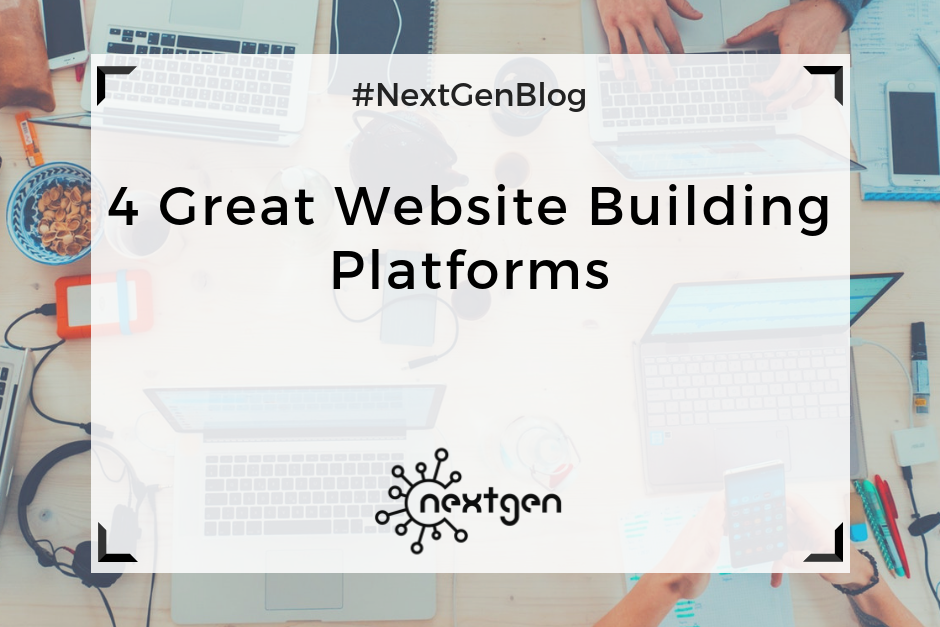
by Sofi | Nov 30, 2018 | Other
Website builders help individuals and small businesses create a website without having to hire a developer, which can be a costly expense. There are a range of website builders available online for any skill expertise, from the most basic beginner to more experienced coders. Before you can compare platforms to find the best website builder for you, it’s important to decide what exactly you want to do with your website. Do you need a blog section, photo gallery, online store, contact form, etc.? Once this has been decided, you’re ready to move on and choose your platform! This article compares four of the best website building platforms.
#1 Wix
Wix is one of the most popular cloud based website builders with very little web development skills needed. Due to its high user-friendly rating, it is popular amongst creative businesses such as photographers, design agencies, and musicians.
Pros: Wix is a fully hosted platform, so you do not need to pay for hosting. You can access hundreds of intuitive design templates that are customizable. There are dozens of free and paid apps that you can install on your website that allow you to add new features and functionality to your site.
Cons: The Free and Connect Domain plans allow for Wix branded ads to appear on your website. The Connect Domain plan does not include a custom domain name, so you will have to purchase that separately. If you decide to move your website from Wix to another platform, it can be very complicated to do so.
Pricing: There are a variety of plans: Free, Connect Domain at $9.16 per month, Combo Plan that supplies a domain at $14.95 per month, and Ecommerce Plan at $26.25 per month.
#2 Shopify
Shopify is specifically designed for online stores and ecommerce websites with a simple, user-friendly interface. There are demos on how to use Shopify when you get started, and no programming skills are needed.
Pros: Shopify is an all-in-one hosted service, so they keep your site managed and updated. There is an integrated payment solution called Shopify Payments that allows you to add third-party payment gateways to accept payments. The intuitive drag and drop interface makes creating your site very user-friendly. You can even integrate Shopify into WordPress, allowing you to utilize two great website building platforms at once.
Cons: The pricing for this platform is higher than the others in this article for someone that is just starting out. If you decide to move your website from Shopify to another platform, it can be very complicated to do so.
Pricing: There are a variety of plans: Basic Plan at $29 per month, Shopify plan at $79 per month, and Advanced Shopify at $299 per month. There is a Shopify Lite plan at $9 per month that allows you to add a Shopify buy button to any website.
#3 Weebly
Weebly is a user-friendly website builder with a lot of great designs ready to use. It features a page builder that allows you to fully customize your site without needing any coding skills.
Pros: Weebly is a fully hosted platform, so you don’t have to worry about managing any software with this site. It comes with dozens of website design templates that are fully customizable to create a unique product, including a live page editor. There is built-in support for ecommerce, so you can easily create an online store through this platform.
Cons: Because Weebly is a fully hosted platform, you cannot hire a developer or designer at any point to add features or functionality to your website. There is a 3% transaction fee on every purchase made through your ecommerce store. You can upgrade to their business plan to avoid this additional fee.
Pricing: There are a variety of plans: Free, Basic Paid Plan at $8 per month billed annually, Pro Plan at $12 per month, and Business Plan at $25 per month.
#4 Squarespace
Squarespace is a popular, fully hosted website builder that is intuitive and user friendly. Focusing on quality over quantity, there are fewer design templates to choose from, but the results are polished.
Pros: All of the design templates are ready to feature all kinds of content. They are fully editable, and you can use more than one template for the same website. Adding content to your website is easy; all you have to do is point anywhere on the website and start typing. Using the drag and drop system, you can create a website within minutes. Squarespace also offers an ecommerce plan that allows you to add an online store to your website.
Cons: Squarespace offers limited integrations with third-party services. This could possibly limit the growth of your business. The ecommerce plan only allows for payments with Stripe, Apple Pay, and PayPal.
Pricing: The website builder starts from $12 and $18 per month. The online store starts from $26 and $40 per month.
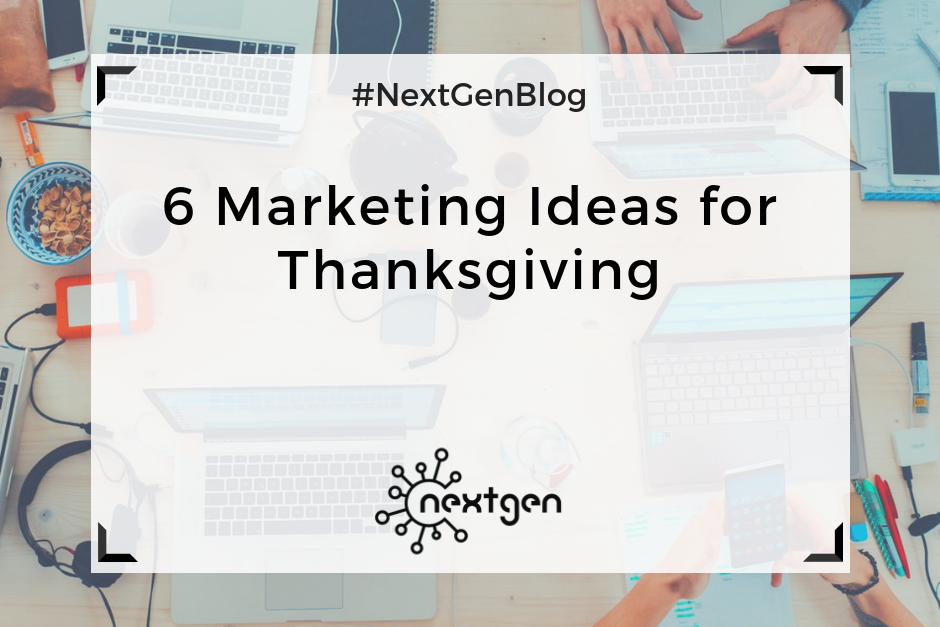
by Sofi | Nov 16, 2018 | Other
Thanksgiving is the time of year when people gather together to celebrate the blessings of the past year. It’s also a great time for businesses to promote their brand and products and renew the relationships with their customers. So, here are some marketing ideas that you can use to utilize your offline and online presence during the holiday this year.
#1 Show gratitude to your followers
As its name suggests Thanksgiving is all about “giving thanks.” So, this holiday is a great time to show your customers, fans, and followers gratitude for being there for you, because your business wouldn’t exist without them. Share things that you’re thankful for, then ask your followers to share the things that they are thankful for and engage in conversation.
#2 Give away things for free
Giving your customers something for free is another way of showing your appreciation for them. For example, you can give away free gifts for every purchase of your product, free eBooks, free downloads, free shipping during the holiday, etc. This will make your customers happy, and keeping your customers happy leads to increased brand awareness and growth in sales.
#3 Have a Thanksgiving sale
Instead of waiting for Black Friday, you can offer discounts for your products a few days earlier or during the whole Thanksgiving week. Put your discount offers on your website and social media profiles to make sure more people see it. Having discounts during a holiday is a great way to boost sales and generate revenue.
#4 Host an event
Hosting events is a great opportunity for connecting with customers and renewing your customer relationships, as well meeting other people working in your industry. For Thanksgiving, you can host a fun or educational event. For example, you can host a happy-hour meetup, speaking event, etc. Events are great networking opportunities and a good way to spread the word about your business.
#5 Run a contest on social media
Running a Thanksgiving-related contest on social media can help you increase engagement and sales. It can be a photo contest, a best recipe contest, a story contest, or any other type of contest that will engage your followers. They could win a prize such as a Thanksgiving dinner, a gift card, money prize, etc.
#6 Post visual content on social media
Visual content is always a winner and is one of the most viral types of content. For Thanksgiving, you can post holiday-themed photos and videos, photos with Thanksgiving quotes, fun holiday infographics, or a beautiful Thanksgiving card wishing your followers a happy holiday. You can find ready-to-use visual content on the internet or you can use graphic-design tools like Canva to easily design your own.
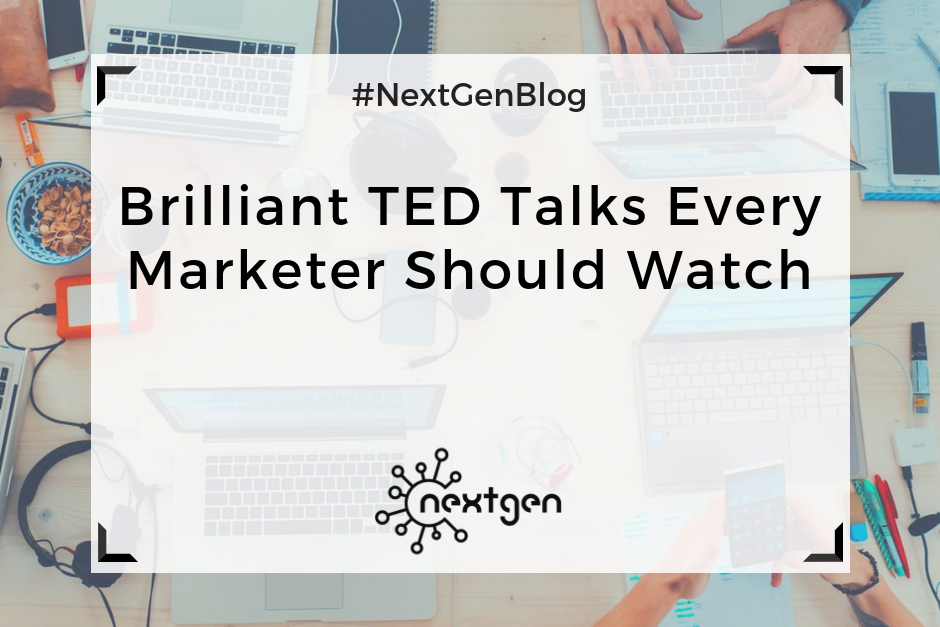
by Sofi | Nov 9, 2018 | Other
One of my favorite things to do when I have some free time on my hands is to watch TED talks. Delivered by experts in various fields and watched by thousands of people around the world, these talks are educational, thought-provoking, and inspiring.
So, I made a list of my favorite marketing-related talks that should serve as a motivation for anyone working in the marketing industry.
#1 Rory Sutherland – Life lessons from an ad man
In this excellent talk, advertising man Rory Sutherland explains the importance of perceived (or intangible) value. Perspective is very important and has a big impact on the decisions we make in our everyday life. When it comes to marketing, brands can use advertising to change people’s perception of a product they want to sell. Besides the many great points, Rory’s brilliant humor and perfect delivery make this talk worth watching over and over again.
https://www.youtube.com/watch?v=audakxABYUc
#2 Seth Godin – How to get your ideas to spread
Bestselling author, entrepreneur, and marketing guru Seth Godin talks about how in a world of too many choices, only remarkable products can get noticed by consumers. He argues that strategies of mass marketing should stay in the past, and brands should instead market to innovators and early adopters, banking on them to spread the word.
https://www.youtube.com/watch?v=xBIVlM435Zg&t=77s
#3 Sheena Iyengar – How to make choosing easier
Sheena Iyengar’s amazing speech on the choice overload tackles a problem people face every day while making all kinds of choices, including buying choices. Experiments have shown that when consumers are faced with choice overload, they often “choose not to choose,” i.e. they choose not to buy anything from a certain business. However, Sheena suggests four simple techniques that businesses can use for mitigating this problem.
https://www.youtube.com/watch?v=1pq5jnM1C-A
#4 Renny Gleeson – 404, the story of a page not found
We all know what the 404 page is and how annoying and frustrating it can be when you see it. However, sometimes you can turn a negative into a positive, and that’s exactly the point that Renny makes in his fun speech. Brands can take advantage of the 404 page by making it something more than a blank error page, and he shows some great examples of how other brands have done this.
https://www.youtube.com/watch?v=eHrcRqu_Es4
#5 Malcolm Gladwell – Choice, happiness, and spaghetti sauce
Canadian author Malcolm Gladwell delivered what is considered one of the best TED talks by telling the story about Howard Moskovitz – the American psychophysicist famous for his study about spaghetti sauce and horizontal segmentation. Although the story uses an example from the food industry, it can be applied to a variety of topics and it helps us understand the nature of choice and happiness. The main takeaway for brands is they shouldn’t put all consumers in one basket, because all of them are individuals with unique tastes. Instead, they should find out what their consumers really want and diversify their product offers.
https://www.youtube.com/watch?v=iIiAAhUeR6Y

